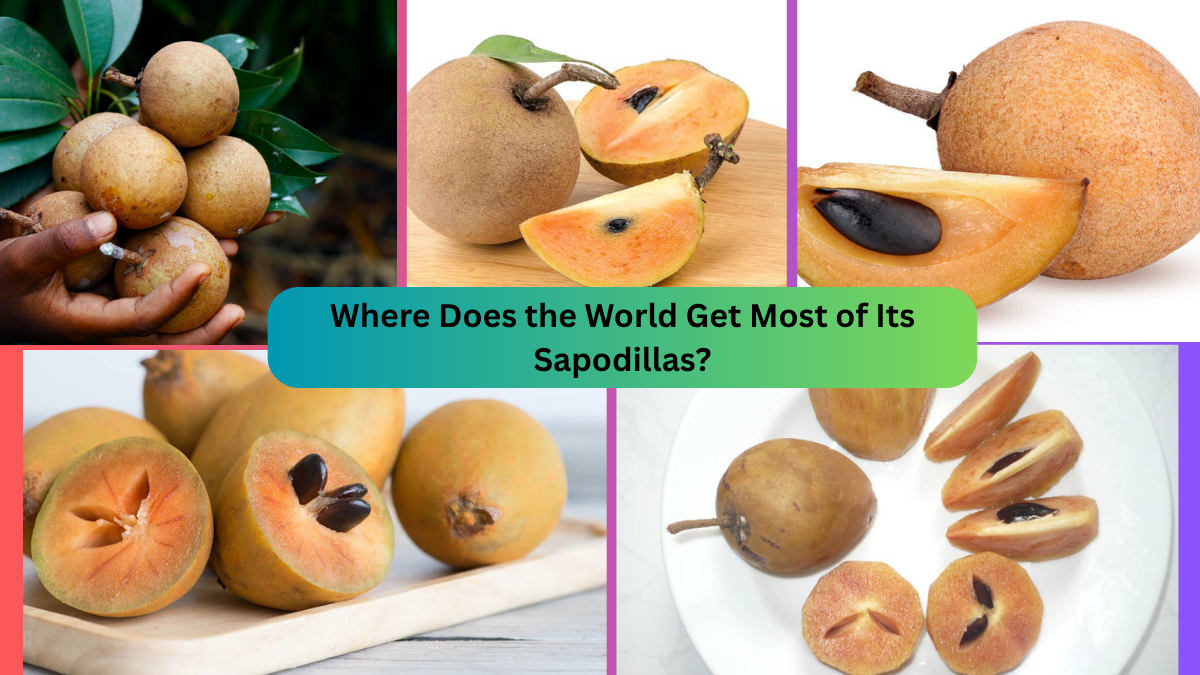Among the world’s treasured tropical fruits, sapodilla (known as chikoo in India and sico or níspero in Latin America) holds a unique place for its soft, sweet, and caramel-like flavor. While it may not receive the same global spotlight as mangoes or pineapples, sapodilla enjoys immense popularity in various parts of Asia, the Americas, and the Caribbean. But if you’ve ever wondered where does the world get most of its sapodillas?, this comprehensive article will reveal the origins, major producing nations, global trade flows, and how this delightful fruit travels from orchard to market.
A Brief Introduction to Sapodilla
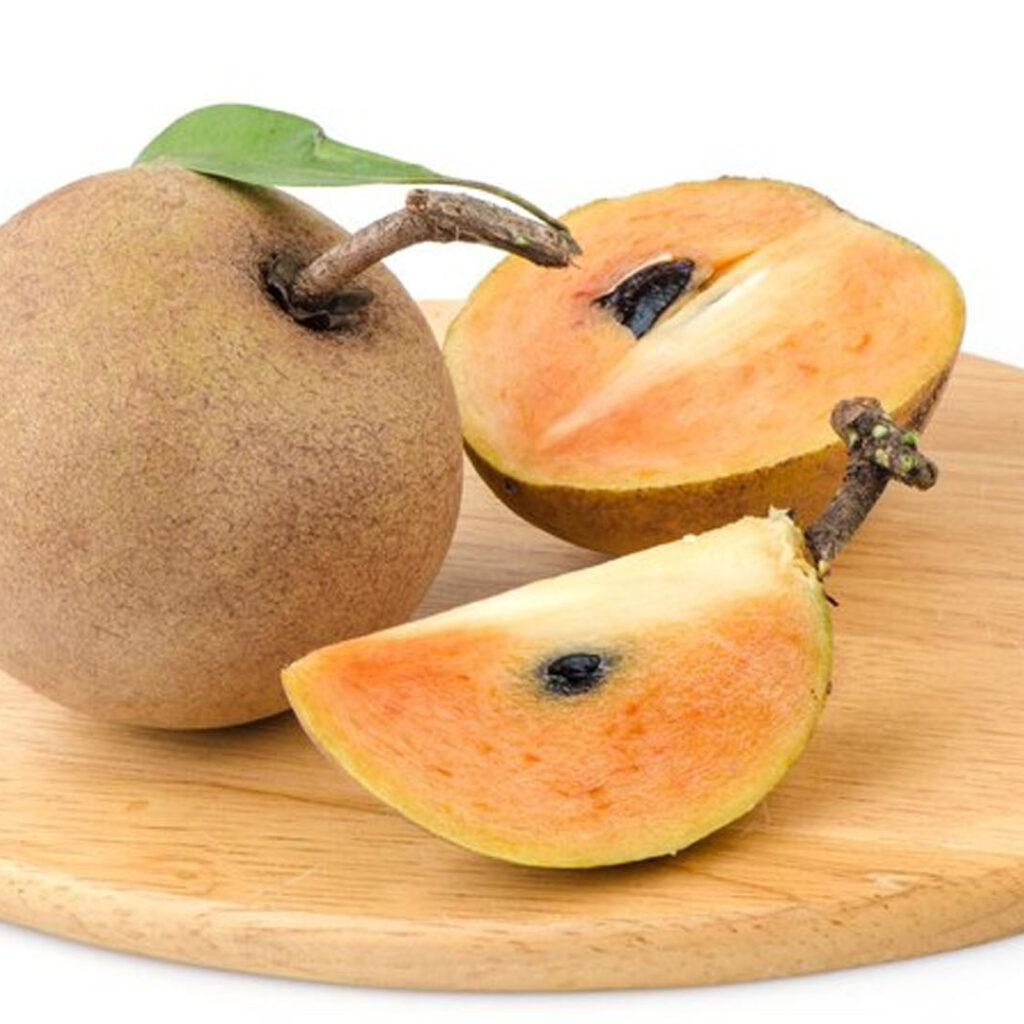
The sapodilla (Manilkara zapota) is an evergreen fruit native to southern Mexico, Central America, and parts of the Caribbean. The fruit is small to medium-sized, with a rough brown exterior and rich, sugary flesh inside. Its flavor is often compared to brown sugar, honey, and ripe pear.
Nutritional Highlights:
- High in dietary fiber, vitamin C, and B-complex vitamins
- Contains potassium, iron, and calcium
- Rich in natural antioxidants and plant tannins
Sapodilla is typically eaten fresh, blended into smoothies, or transformed into ice creams, jams, and desserts.
Where Did Sapodilla Originate?
The sapodilla tree is native to the Yucatan Peninsula of Mexico and nearby regions of Belize and Guatemala. The ancient Maya and Aztec civilizations valued sapodilla not just for its fruit, but for the latex-like sap called chicle, which was used for centuries to produce natural chewing gum.
Today, sapodilla trees thrive in tropical and subtropical climates, growing successfully in India, Southeast Asia, the Caribbean, and parts of the Americas.
Which Countries Grow the Most Sapodillas?
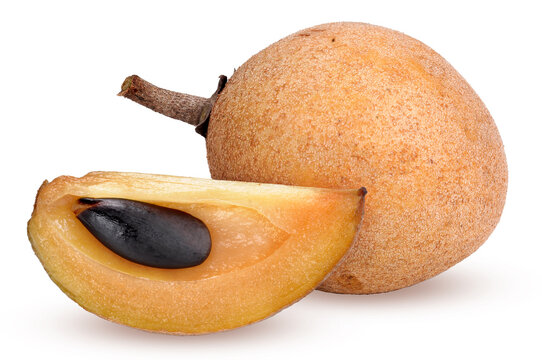
Let’s take a closer look at the countries where the majority of the world’s sapodillas are grown today:
India — The Global Leader
When it comes to sapodilla production, India leads by a wide margin, both in volume and market influence.
- Annual Production: Over 1.3 million metric tons
- Major Growing States: Maharashtra, Gujarat, Karnataka, Andhra Pradesh, Tamil Nadu, Goa, and Odisha
- Famous Varieties: Kalipatti, Pala, Dahanu, Cricket Ball
India consumes most of its sapodilla domestically but also exports fresh and frozen sapodilla pulp to the Middle East, Europe, and North America.
Mexico — The Native Home
Mexico, where sapodilla trees originated, remains a significant producer.
- Annual Production: Approximately 60,000–70,000 metric tons
- Key Growing Regions: Yucatan Peninsula, Campeche, Quintana Roo
- Usage: Primarily for local markets, occasional exports to the U.S. and Canada
The chicle from sapodilla trees was historically a vital export product for Mexico, even before the fruit itself gained international popularity.
Thailand — Southeast Asia’s Sapodilla Hub
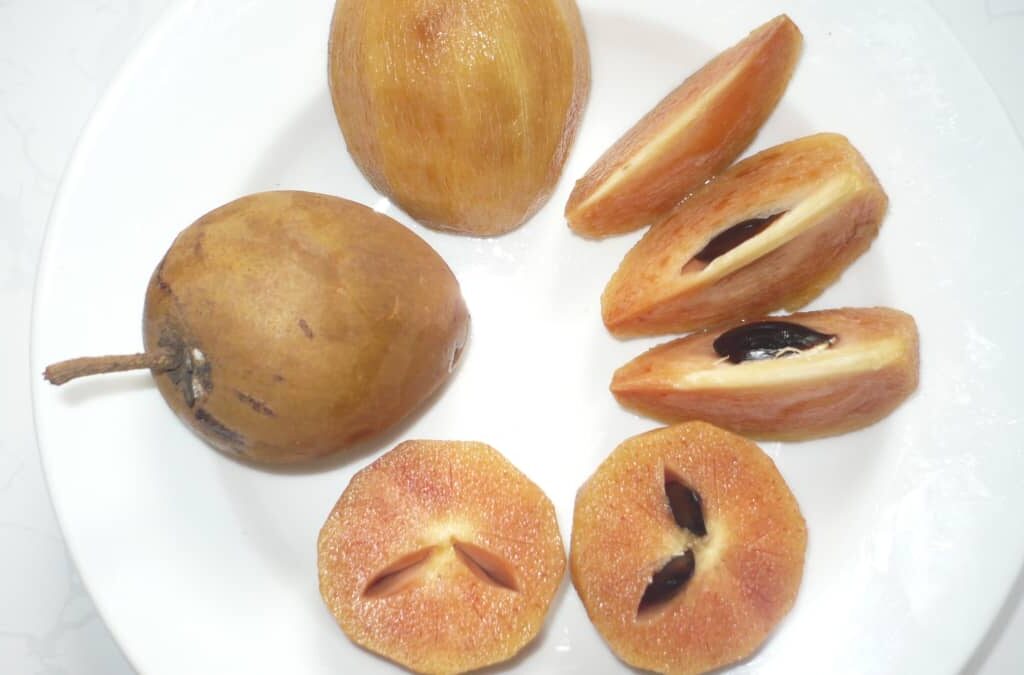
In Thailand, sapodilla is considered a popular backyard fruit and commercial crop.
- Annual Production: Around 30,000–35,000 metric tons
- Main Regions: Southern and Central Thailand
- Varieties: Local favorites like Kai, Paet Riew, and Chieng Mai
Thailand exports small volumes to neighboring countries like Malaysia, Singapore, and China.
Philippines — Home of the ‘Chico’
Locally known as ‘chico’, sapodilla is a beloved tropical fruit in the Philippines.
- Annual Production: 15,000–20,000 metric tons
- Major Regions: Luzon and Mindanao
- Usage: Mostly for fresh domestic consumption and desserts like chico milkshakes and jams
Malaysia and Indonesia
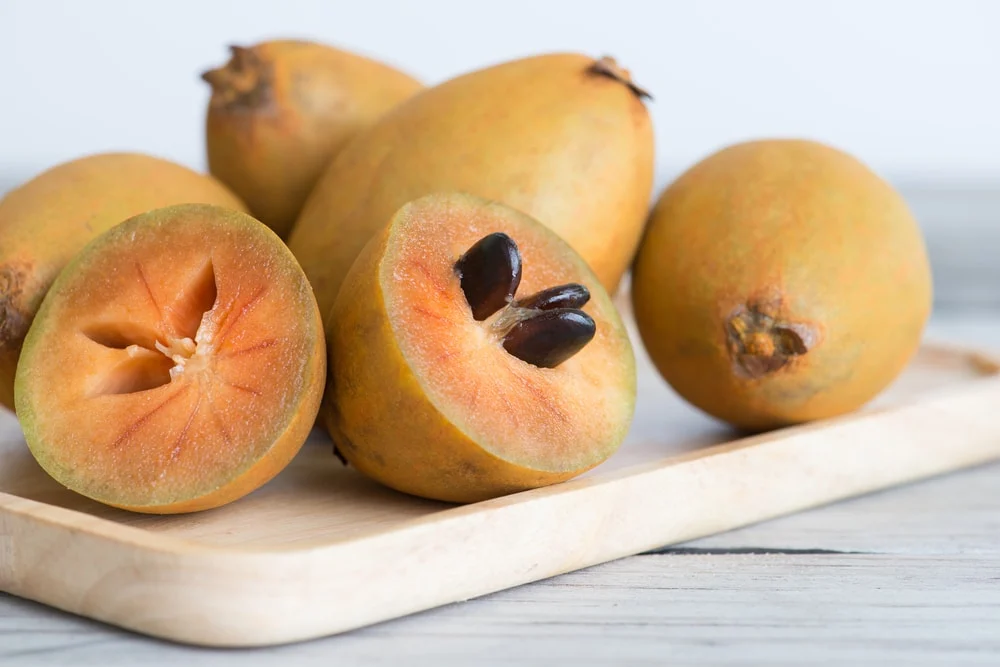
Both countries produce sapodillas on a smaller scale.
- Malaysia: Approximately 5,000–7,000 metric tons
- Indonesia: Around 3,000–5,000 metric tons
Sapodilla thrives in warm, humid regions and is cultivated in backyard orchards and mixed farms, sold mainly in local markets.
Global Sapodilla Production Estimate
| Rank | Country | Estimated Annual Production (Metric Tons) |
|---|---|---|
| 1 | India | 1,300,000 + |
| 2 | Mexico | 60,000–70,000 |
| 3 | Thailand | 30,000–35,000 |
| 4 | Philippines | 15,000–20,000 |
| 5 | Malaysia / Indonesia | 8,000–12,000 |
Source: National Horticulture Boards and regional agricultural agencies
Where Does the World Get Its Sapodillas?
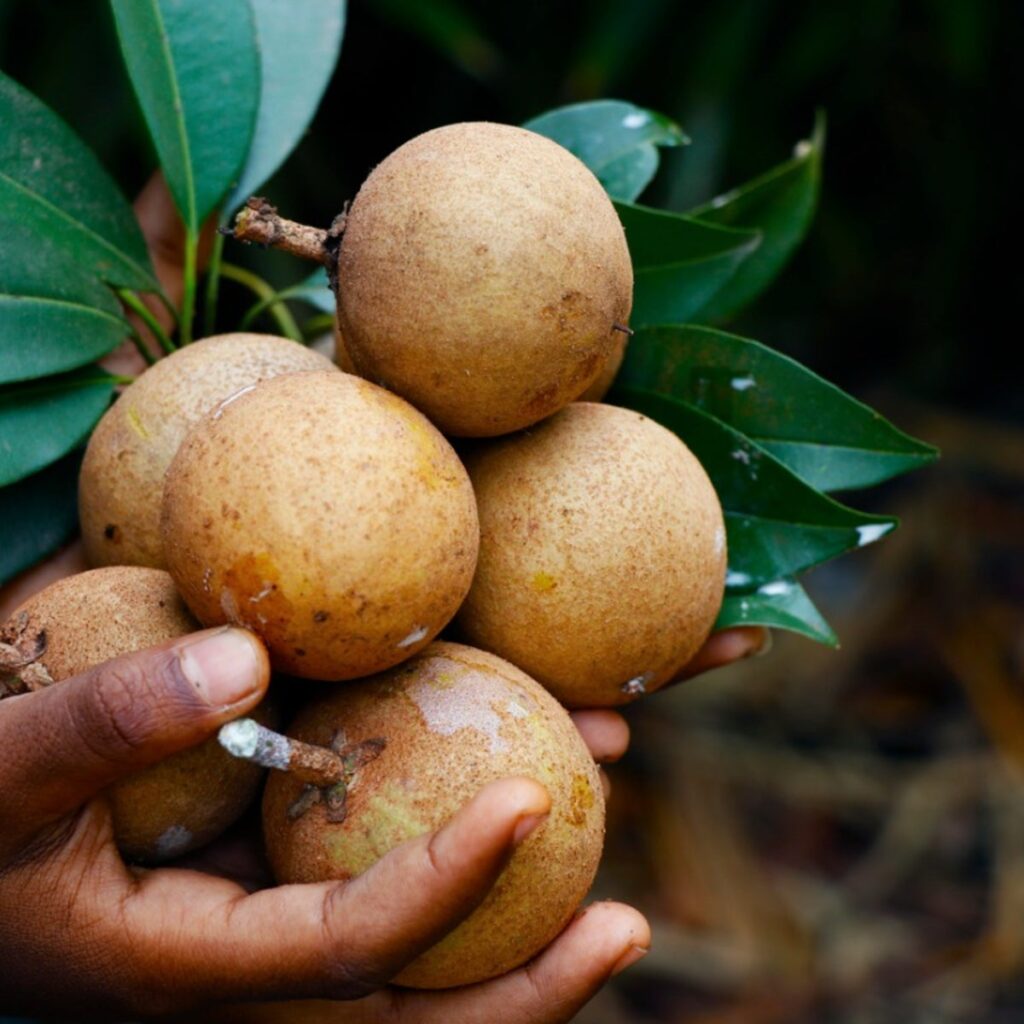
Since sapodillas are highly perishable, they’re rarely shipped long distances as fresh fruit. However, several countries import sapodillas via air freight for specialty markets, while frozen pulp and value-added products help extend their reach.
Key Sapodilla Exporting Nations:
- India: The largest exporter of both fresh sapodillas and frozen pulp.
- Main Export Markets: UAE, Saudi Arabia, Oman, Qatar, UK, Canada, USA
- Mexico: Supplies fresh sapodillas to the USA and Central American countries.
- Thailand: Limited exports to Malaysia, Singapore, Hong Kong, and China.
- Philippines and Indonesia: Primarily for domestic use and minor regional trade.
Forms of Sapodilla in International Markets:
- Fresh Sapodillas: Available in limited quantities in ethnic grocery stores in the USA, Canada, Europe, and the Middle East.
- Frozen Sapodilla Pulp: Extensively exported from India, used in ice creams, milkshakes, desserts, and health drinks.
- Processed Products: Sapodilla jam, juice blends, and sweets occasionally appear in specialty stores and gourmet food sections.
Sapodilla Supply Chain Challenges
- High Perishability: Sapodillas ripen quickly after harvest and have a short shelf life.
- Post-Harvest Losses: Without cold chain storage, 25–30% of production is lost in transit or storage.
- Limited Global Awareness: Despite its popularity in Asia and Latin America, sapodilla is still a niche fruit in Europe and North America.
Why Is Sapodilla Gaining Global Popularity?
- Unique caramel-like flavor
- Rich nutritional profile (fiber, antioxidants, vitamin C)
- Vegan and gluten-free dessert options
- Adaptable to milkshakes, smoothies, and desserts
- Increasing health-food trends favor natural, tropical fruits
As awareness grows, sapodilla is being introduced more frequently in exotic fruit baskets, specialty grocery stores, and fusion dessert menus worldwide.
Conclusion: Where Does the World Get Most of Its Sapodillas?
To answer clearly:
- India supplies over 70% of the world’s sapodillas, both fresh and in processed forms like frozen pulp.
- Other countries like Mexico, Thailand, the Philippines, Malaysia, and Indonesia contribute smaller shares, mostly consumed locally.
- Global exports are limited but steadily growing through India’s expanding frozen pulp and processed product markets.
If you spot sapodilla in your supermarket abroad, there’s a good chance it came from the orchards of Palghar, Dahanu, or Maharashtra in India, carried across continents for you to enjoy its unique, sugary sweetness.
